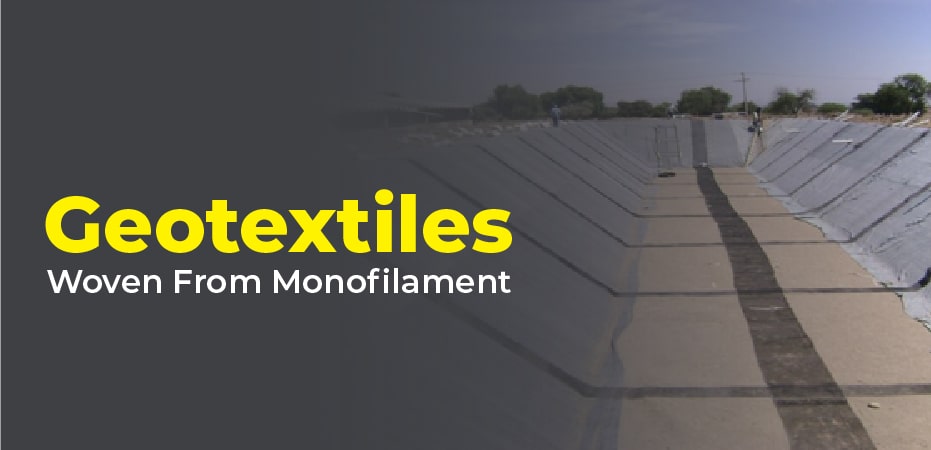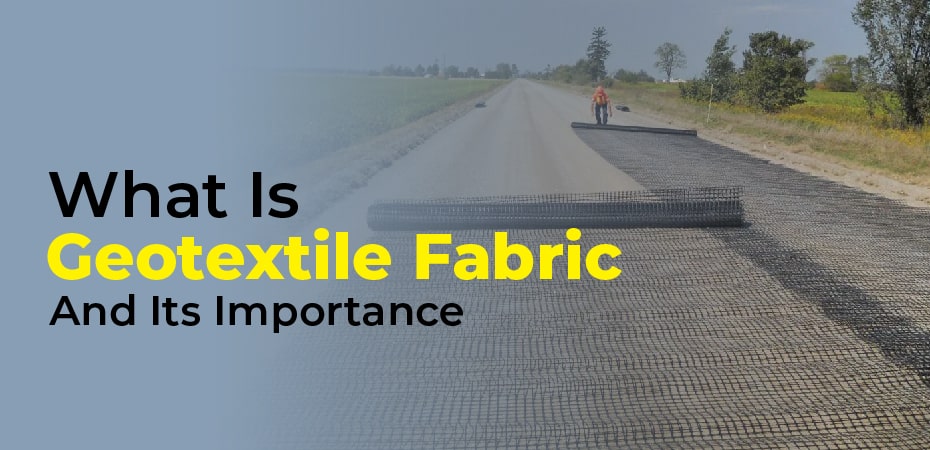An erosion control material, drainage aid, or soil stabilization geotextile is usually defined as any textile material that can permeate the soil. In other words, if it is buried in the ground and made of fabric, it is probably a geotextile! The use of geotextiles fabrics dates back to the Pharaohs of Egypt thousands of years ago.
In the early days of geotextiles, the soil was mixed directly with natural fibers or vegetation. Polypropylene, polyester, polyethylene, and polyamides are the most common synthetic polymers used in geotextiles nowadays. Woven geotextiles, knitted geotextiles, and non-woven geotextiles are all available. A wide range of geotextiles is available due to the wide range of polymers and manufacturing processes.
In the 1950s, woven industrial fabrics were believed to be the first geotextile applications. In 1958, a Florida waterfront structure was one of the earliest documented examples.
Installations were carried out on a piece of private property that had been severely eroded during storms and involved the Coastal Engineering Lab at the University of Florida.
Nonwoven geotextiles were first developed by Rhone Poulence in France in 1968. During the 1970s, it was used to construct dams in France as extremely thick needle-punched polyester.

The Significance Of Geotextile Fabric
The fact that geotextile fabrics are so common on job sites today makes it hard to believe just eight decades ago, this technology didn’t even exist. Multi-billion dollar industries have grown up around this type of technology, which enables the separation of soil layers.
By 2018, the global market for geotextiles had grown from zero to over $4.1 billion, a remarkable market growth. It is now growing at an accelerated pace. The number is expected to rise by 12.1% per year through 2025, or a compound annual growth rate (CAGR).
Due to the effectiveness of these products, the geotextile market has grown extremely rapidly. In addition to being a requirement by federal agencies, this technology is also specified and used by municipalities and contractors routinely.
The installation and specification of geotextile fabrics result in significant value. Geotextiles are useful in soil separation, which is a benefit common to all geotextiles. Separating soil layers prevents soil from mixing with each other.
Geotextile technology has revolutionized the way construction companies mix soil layers during the building process. As an example, road building often leads to processed gravel sinking into softer subsoils.
The adage in road building is, “Because a piece of stone is heavier than a piece of mud, it will become heavier than 100 pounds. This means the heavier stone will simply disappear into the softer material beneath. In the case of geotextile fabrics properly applied, mixing and contamination are effectively eliminated.
Woven Geotextiles Fabrics
Frequently, the materials are constructed for driveways, parking garages, road linings, and highways. These products have proven especially effective in bridging damp, weak, or inferior subgrade materials. The low permeability of the fabric thus allows the fabric to be separated and stabilized for a long period of time.
By selecting and installing woven geotextiles correctly, you can enhance performance and lower maintenance.
Geotextiles: Non-Wovens
When permeability and soil separation are critical, nonwoven geotextiles are chosen. French drains and other sub-surface drainage systems are often surrounded by these materials. Under rock riprap revetment, nonwovens are typically used to separate and drain.
It will be desirable for water to pass through a fabric in both directions when installing a new gravel driveway over dry or well-drained subsoil. In these conditions, moisture can be absorbed into the subsurface during and after rain events, while evaporation between wet periods is facilitated.

Geotextiles Woven From Monofilament
Geotextiles with monofilament woven (Woven Monofilament Geotextiles) are primarily used in specialized applications where strength and filtration are essential. A woven geotextile has slit tapes that are highly impermeable, but a monofilament has strands that are woven together in a distinctive screen-like pattern.
The products can be sized according to soil characteristics for a strong combination of strength and flow properties. Because of these characteristics, woven monofilaments often appear below concrete mats that articulate. The most important strength and drainage characteristics are also both of high importance underneath the surface of high-flow drainage channels.
Geotextiles That Are Spun Bound
In addition to high strength and durability, spun-bound geotextiles are often used in applications requiring permeability. A very tough yet permeable product is created by spinning, rolling, and heating the product.
These geotextiles are typically specified in landscaping, recreational, septic system construction, and subsurface drainage applications that require high strength and long life.
Technical Assistance And Design
I would say that regardless of which category you are interested in, there are plenty of choices to choose from. We encourage you to contact your local EJP marketing representative for assistance with choosing the right product for your organization.
To answer specific technical questions, your local representative will typically contact a trusted partner from Team EJP’s global vendor network in order to identify the best possible way to resolve the issue.
Conclusion
In contrast, geotextiles are different from materials such as fabrics made into mats, nets, or grids, or plastic sheets formed into sheets. Geosynthetics would be more generalized terms for them. We provide a complete line of geotextiles. Contact us for more information if you are a distributor, contractor, geotechnical engineer, or homeowner.


